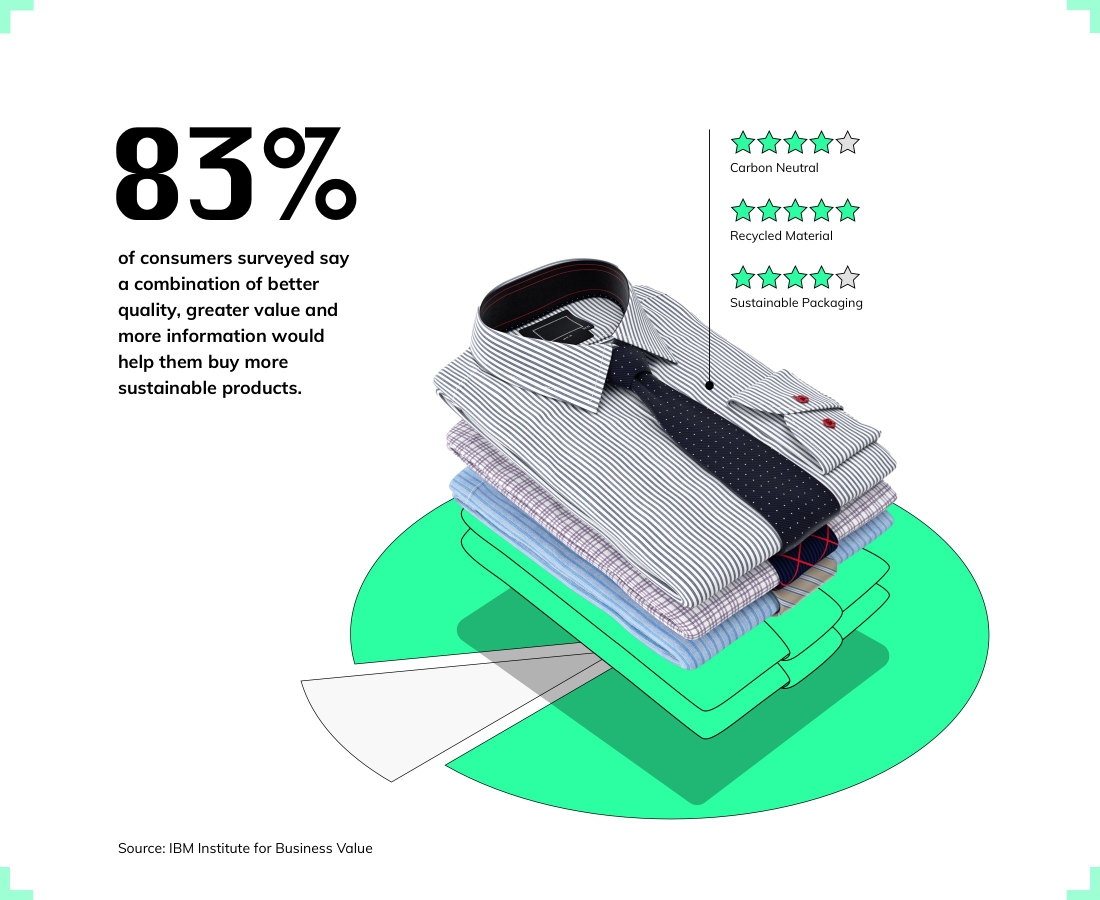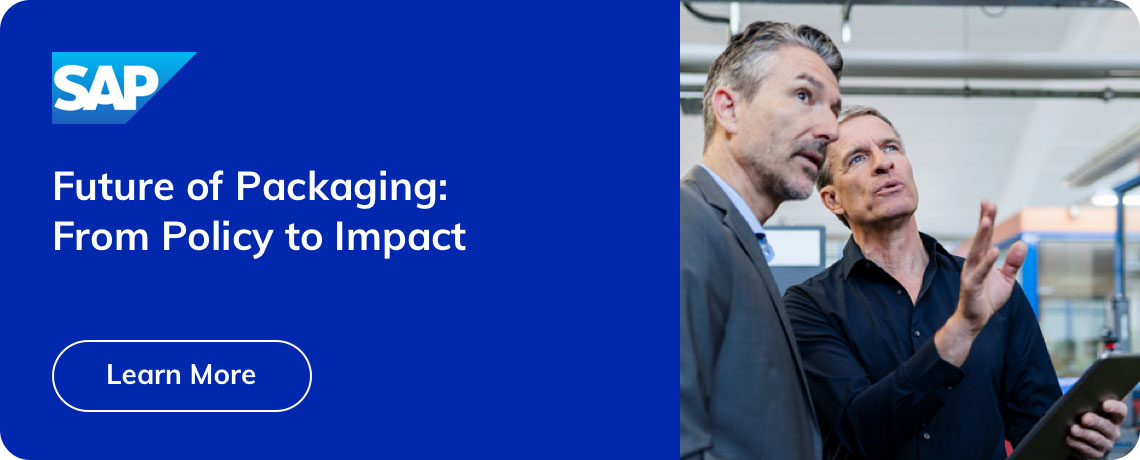Jun 27, 2023
How Can Companies Promote Sustainable Consumer Behavior

The Challenge
Changing consumer behavior at scale is crucial for climate action. According to the 2021 EY Future Consumer Index, 84% of consumers worldwide say sustainability is important when making purchase decisions, and 43% want to spend more money on goods and services from companies that help the community, even if those companies charge a higher price.
But many consumers fail to follow through in their purchases; the same study reveals that 47% say it costs too much to purchase sustainable products. IBM Institute for Business Value research also shows that consumers are increasingly skeptical of ESG claims. Only 20% say they trust the statements companies make about environmental sustainability, down from half just two years ago.
For businesses, it is time to consider how technology can give customers the information they need to make more sustainable and informed purchasing decisions. The same IBM Institute for Business Value study shows that inadequate data is the biggest challenge organizations face in advancing their ESG goals.
The Impact
Consumers play a critical role in influencing the scale and speed of the net-zero transition. Whether as individuals buying online or in stores, or as business buyers buying at scale, their choices at the point of payment increasingly test and reward the sustainability credentials of companies and their products, while also signaling what they may buy in the future, says Steve Varley, EY’s Global Vice Chair for Sustainability.
“This is important because many of the investments that have to be made by businesses are multiple years out, and in many areas, sustainable products don’t yet exist at the scale we need them,” Varley says.
Access to sustainability information helps consumers make more sustainable choices, allowing them, for example, to prioritize local growers or harm-reducing growing practices, or circular economy approaches for fashion and technology.
Multiple opportunities exist to engage consumers, explains Adrian Slobin, EY’s Partner, Americas and Global Consulting Leader for Sustainability.
“Labeling carbon emissions and eco-ratings on devices, creating marketplaces for pre-owned devices and providing options for consumers along the purchase journey to make sustainable choices are all features that educate, inform and influence choice,” says Slobin.
Technology and information systems can promote more sustainable consumer behavior, and can also be good business, says Christina Shim, VP and Global Head of Product Management and Strategy for IBM Sustainability Software.
“Without data, sustainability is not visible, it’s not actionable and it’s not operational. By leaning into sustainability practices today, organizations can get better positioned to be more efficient, more sustainable and more profitable in the years to come,” says Shim.
In fact, more than 80% of CEOs surveyed say their sustainability investments will drive better business results in the next five years, according to IBM Institute for Business Value research.
Businesses can bridge the consumer intention gap by increasing awareness and incentivizing sustainable behavior. Carbon labeling enabled by innovative technology could be key to helping consumers make informed purchasing decisions.
Developments to create trusted labeling for consumers include the EU’s move to expand its Ecodesign Directive for sustainable products beyond energy.
“Recognizing that this is a time-intensive process, and that most companies cannot afford to label or certify their entire portfolio, an alternative method is investing in enabling consumer education through transparency and trust. Data and AI technology can be a helpful resource in establishing transparency and trust with consumers,” says Jones.
Businesses that can accurately assign emissions to manufactured products also unlock real-time transparency that enables decision makers to move at the pace of the demanding consumer.
Gabriele GoertzGlobal Head of Sustainability Ecosystem, SAP
The Takeaway
Changing consumer behavior toward sustainability is a crucial component of climate action. Businesses can bridge the consumer intention gap and promote sustainable consumer behavior by increasing awareness, incentivizing sustainable behavior and utilizing data.
Organizations should focus on giving customers access to information that helps them make informed decisions. Data and AI technology can be valuable resources in achieving these goals.
“Customers are a part of every company’s Scope 3 emissions and must be part of the solution to become net zero,” says Donna Warton, Microsoft Corporate Vice President, Supply Chain and Sustainability.
By making sustainability messages clear, concise and relevant, businesses can effectively engage consumers, boosting sustainability and the bottom line.
When it comes to engaging consumers, it’s important for businesses to make their sustainability message clear, concise and relevant. It’s a multilayered and complex issue, but it has to be done.
Adrian SlobinPartner and Global Consulting Leader for Sustainability, EY
Businesses that can accurately assign emissions to manufactured products also unlock real-time transparency that enables decision-makers to move at the pace of the demanding consumer.
Gabriele GoertzGlobal Head of Sustainability Ecosystem, SAP
Related Content




